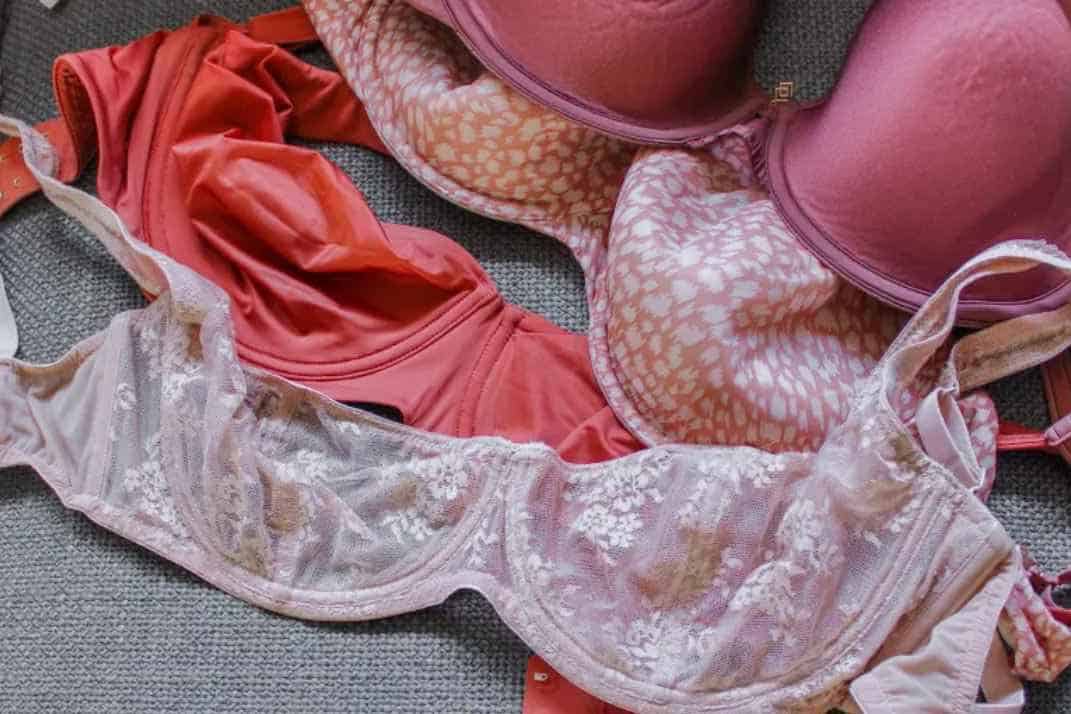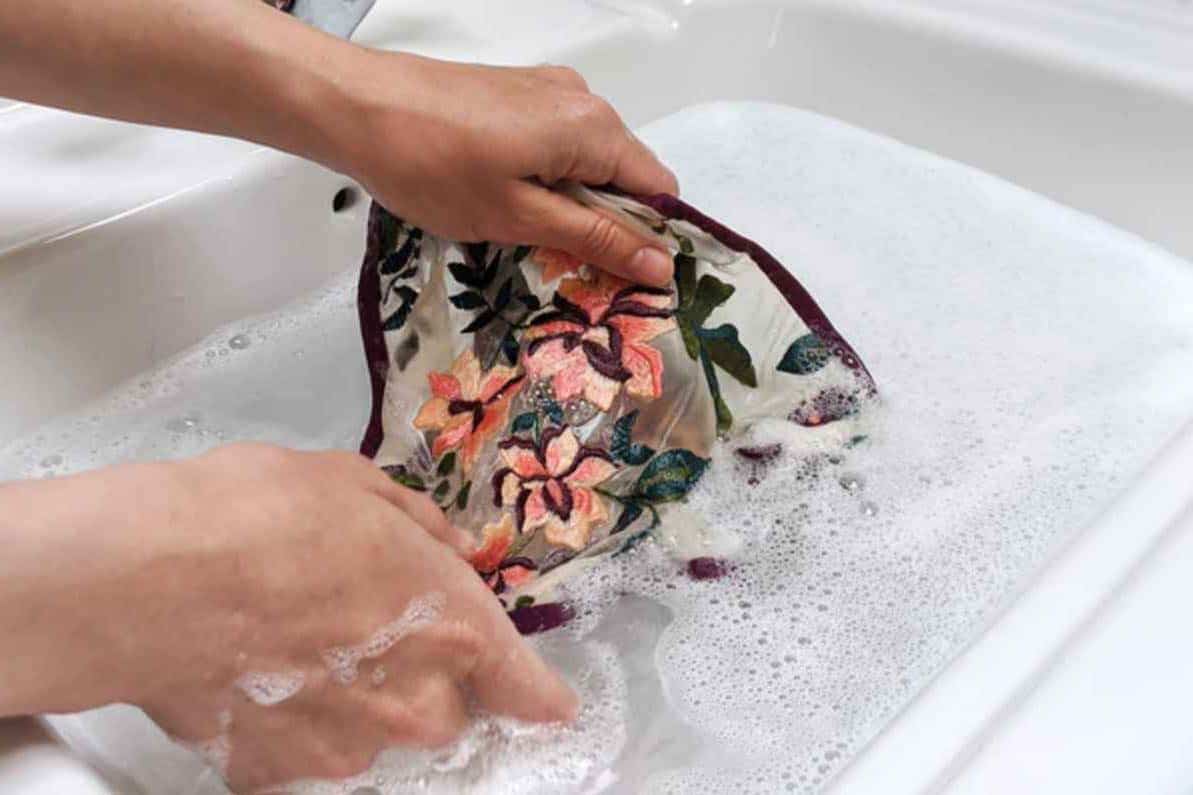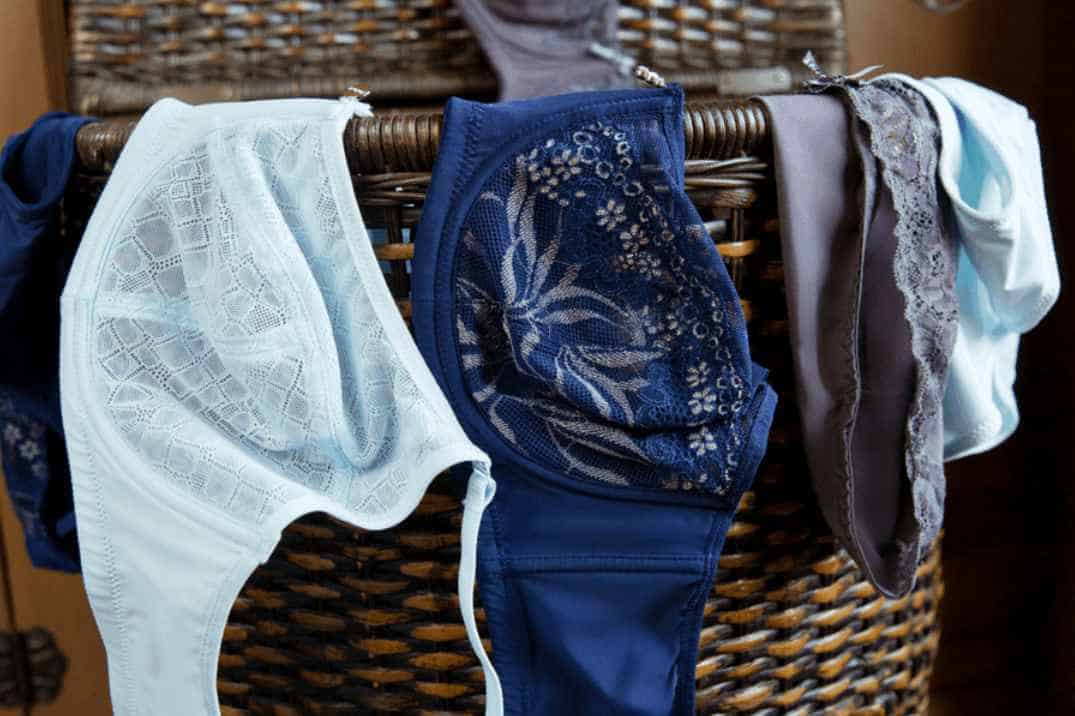Lingerie is more than just a piece of undergarment or sleepwear. Lingerie can make you feel confident about your body and help boost your self-esteem. In turn, it is rightfully fitting to treat your lingerie with meticulous care.
Today, we’ll tackle the different lingerie fabrics, how to wash lingerie, and drying and storage tips. It’s wise to make extra effort to take the time to learn how to clean it. After all, spending some bucks on lingerie is like an investment! So ready your best fits, and let’s get started.
Different Lingerie Fabrics and Their Washing Requirements
Listed are some of the most common materials used to make lingerie and how to wash them properly.
Satin Fabric
Among all the fabrics, satin is one of the well-loved textile weaves used to make lingerie. Silk, polyester, and rayon are some fibers used to create a satin fabric. Satin fabrics can be hand-washed or machine-washed. Generally, satin does well under cold water with a gentle detergent. If you’re going to use the washer, make sure to run it under a delicate cycle while secured in a protective washing bag.
Lace Fabric
Lace fabrics are popular materials used to add texture and design to lingerie. Nylon with elastane or metallic threads and cotton are the commonly used fibers to create a lace fabric. Lace is very delicate. So hand-washing them is the best option. Cleaning it in cold water and gentle detergents can help maintain its color and texture.
Mesh Fabric
Mesh fabrics work as a design or interlining for bras. They are typically made from nylon with elastane for added stretch. Mesh is quick and easy to clean, so hand-washing is preferred for this fabric. For mesh without embroidery, you can place it in a protective bag and run it through a delicate cycle.
Jersey Fabric
Jersey fabrics are known in the sports world. But it is also accustomed to many underwear lingeries. Rayon, cotton, and polyester are commonly used fibers to create a jersey fabric. Most jersey fabrics can be cleaned using a washer under a delicate cycle. And again, placing the lingerie in a protective bag can prolong its life. But if you encounter jersey fabrics made of satin fibers, consider it an exception. Satin should be hand-washed or dry-cleaned.
Microfiber
Microfiber fabrics are gaining popularity, especially in the sports industry. Polyester, nylon, and rayon are the commonly used materials to make microfiber. Microfibers can be cleaned using a washer under a delicate cycle with cool or warm water. Although it does not require the utmost care as the others, it is still beneficial to use a protective bag.
How To Prepare Your Lingerie For Washing
Sometimes we get lazy and throw everything in the washer to save time. Can you relate? Don’t worry! We have been there too! White with white, darks with darks, and colored with colored items. That became the ground rule in most households. While it’s very efficient, it does not consider the make of the fabric and the proper care for each.
Think of your lingerie like a flower in a pot. When you give what it needs, it blooms beautifully. Do you agree? Now hold on to that thought while you read through these six simple tips:
- Read the clothing label. Categorize each garment based on its fabric.
- For bras, hook the closures together before placing them in the washing machine.
- It may sound icky, but avoid washing your bra after every wear (unless it has a lot of sweat). Regularly washing it can damage the structure.
- Consider mesh bags (protective laundry bags) as your best friend when washing lingerie in a washer.
- Pre-treat any stain. Before using a washer, remove stains in lingerie by gently scrubbing them with a brush.
- Make sure to set the right program before you throw in your laundry. Gentle detergents and cold water is the perfect combo when cleaning lingerie.
With these preparation recommendations in mind, you do not have to worry about damaging your lingerie. Now let’s talk about how to hand wash and machine wash lingerie.
Hand Washing Lingerie: The Proper Way
Delicate fabrics require the utmost care and patience. That’s why hand washing your lingerie is the best option to preserve its structure. Resorting to this can increase garment lifespan, and it also helps save water. So ready your basin and detergent, and let’s get cleaning!
What you will need:
- Brush (for pre-treatment)
- Basin or a bucket
- Mild solution detergent
Instructions:
- If there are any stains, pre-treat the lingerie using a brush dipped in a detergent.
- Fill a bucket or basin with cold water and mix in the mild detergent. For two lingerie sets, a quarter cup will do.
- Add in your clothes and let them soak for 10 to 20 minutes.
- Once done soaking, move the pieces around the basin. Squeeze the pieces gently to move the sudsy water through them.
- Rinse the lingerie in cold water. Gently press the garment to remove excess water. Avoid harsh wringing.
- Lay a towel and roll the lingerie in them. It helps remove excess moisture to lessen dripping when hung.
- Place the pieces on a drying rack and let them air dry.
To visualize how to hand wash your bras properly, you can watch this video: https://www.youtube.com/watch?v=xm7pETlJrwA.
Machine Washing Lingerie
Sometimes we get so busy with work and household chores that we do not have time hand wash each piece. With conditions like this, a trusty washing machine is what we need. Luckily, there are delicate and gentle wash cycles in most washers today.
Delicate and gentle cycles run in a low-speed spin with warm or cold water, making it suitable for most lingerie fabrics. Also, using cold water means fewer chances for your lingeries to lose its color and shrink.
What you will need:
- Gentle detergent
- Mesh bag
- A washer with a delicate or gentle wash cycle program
Instructions:
- Clasp bras to prevent snagging. Then place any delicates inside the mesh bag.
- Select a delicate or gentle wash cycle on the washing machine.
- Set the water temperature to cool (60 to 80° Fahrenheit). However, some washers automatically set the temperature depending on the setting.
- Once done, remove excess water by rolling it in a towel.
- Place the pieces on a drying rack and let them air dry.
Learning how to wash your lingerie is one thing, but knowing how to dry it properly and store it is another. Drying and storing after you clean your lingerie also plays a role in increasing its lifespan. So before we end this blog, we will share some tips on keeping your lingerie in its best form.
Drying Lingeries: Air Dry VS. Tumble Dry
You might think that the next best step after machine washing your lingerie is to run a tumble dry. If you do, then today is the day to reconsider your laundry routine. Here’s why.
Tumble dryers often utilize heat when drying clothes. It can cause lingerie to shrink or fade its colors. And constant use of this can also result in microtear on fabrics.
Aside from this, notice how the paddings or wire on the bra are all over the place after washing. It is because of the speed of spin in this setting. The agitation and constant movement inside the washer mimic the wringing action on clothes. Delicate materials like silk and laces might get damaged with this setting.
Instead of using a tumble dryer, pat the excess water using a towel or roll them in. Air drying your lingerie in a clothing rank prevents it from shrinking and fading. For bras, you can hang them by the center gore or lay them flat to dry with the cups facing up.
Remember that methods like this may take a while. But you’ll thank the natural process once you see the difference.
Storing and Organizing lingerie
Lingeries have different sizes, shapes, and fabrics, making them tricky to organize. To save you some time from the endless cycle of cleaning and messing you’re wardrobe, here are some storage tips you can follow.
- Hang lingeries that easily crease using a non-slip hanger or those with strap slots. You can also use skirt hangers for strapless lingerie.
- Use a fabric-lined basket for your folded lingerie to avoid snagging.
- Drawer dividers are very helpful if you don’t have much closet space. You can sort them by fabric, length, or by usage.
- Allocate one drawer for your bras. Then stack them behind each other with cups facing forward. Doing this can prevent the cups from deforming when stacked vertically.
If you want to know more about lingerie storage and how to fold underwear, watch this video:
Take Away
Are you now confident to clean your lingerie without worrying about getting damaged? Applying these tips on your next wash day can save your lingerie from deforming and losing its true colors.
Whether you’re planning to hand wash your lingerie or use a washer, it is best to take precautions when working with delicates. Read the clothing label, and understand what it needs. Treat drying and storing the same importance as washing. Once you see all the results, you’ll thank yourself for putting much effort into understanding how to wash lingerie.

Jessica Oliver is a fashion enthusiast with more than ten years of experience in the industry. She previously managed her own clothing store in New York before becoming a mother of three. With a passion for sustainability and a desire to share clothing care and recycling tips.








